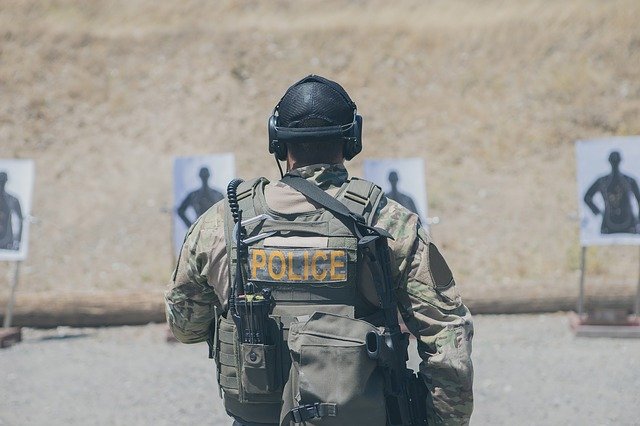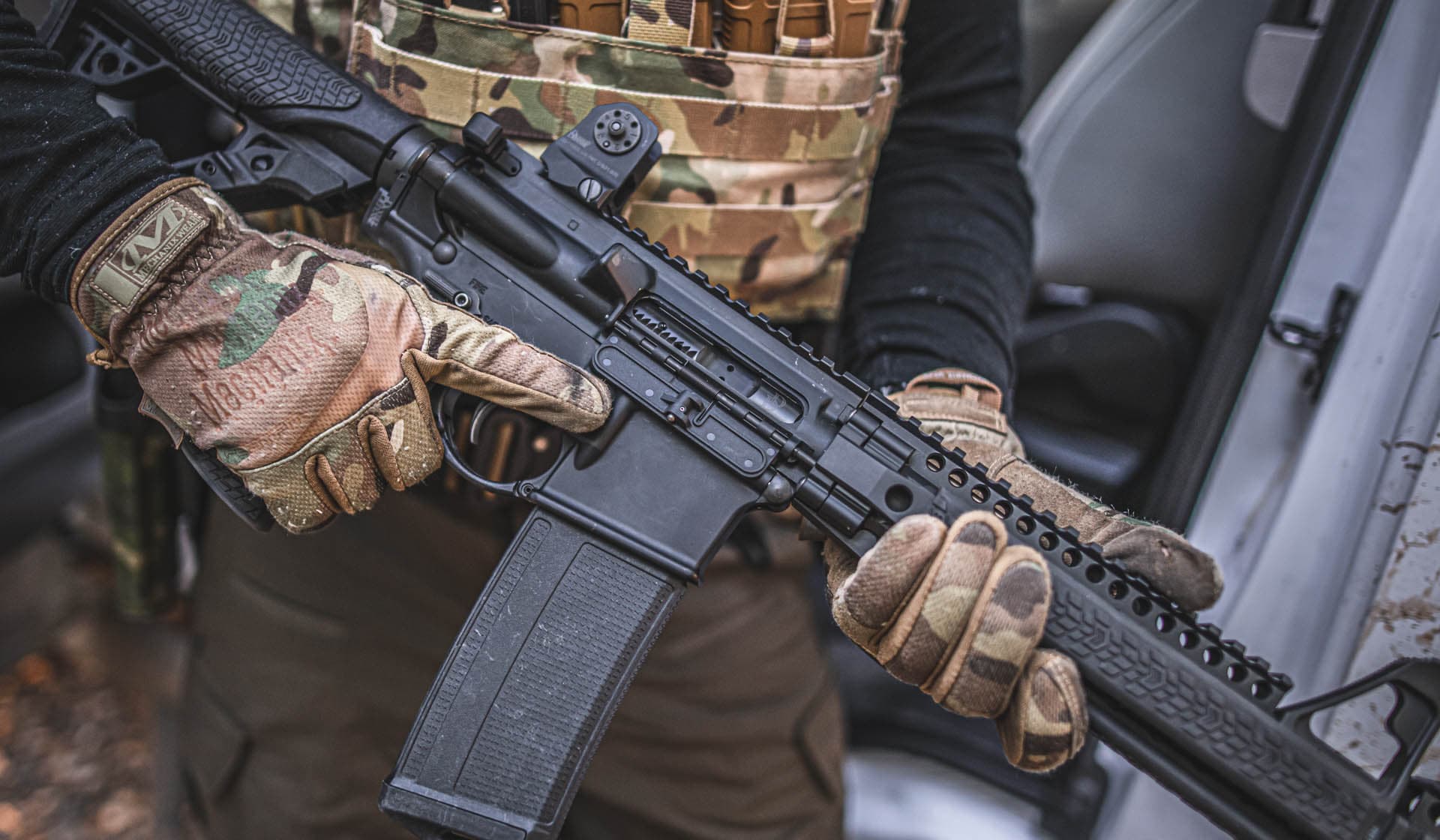
Handgun defense training comes in many forms, and there are many different classes. The various types of handgun courses include the Bullets & Bandages I and Fundamentals of Tactical Handgun II classes. Some classes include Target ID Training and Advanced Tactics. A great handgun defense training course will equip you with all the necessary tools to protect your self. Here are the different types of handgun classes.
Bullets & Bandages I
Bullets & Bandages is a class at SIG Sauer Academy that combines emergency medical care and shooting. This class has the same logo and format as Dark Angel Medical Tactical Medicine. But it's different because it includes a live-fire component to the training. Bullets & Bandages, a course lasting three days, will teach participants how first aid can be administered under fire in a real-world situation.
In "Bullets & Bandages", students will learn the various types of gunshot wounds. He will be shown photographs of entry and exit wounds. He will also learn about stab wounds, blast injuries, fractures, and torso problems. He will also discuss the effects of the bullet on the lungs, including a tension pneumothorax and a pneumothorax.

Tactical Handgun II: The Fundamentals
To become a certified firearms instructor, you must first learn the fundamentals of handgun firing. The first course, Fundamentals of Tactical Handgun, teaches the fundamentals of shooting and concealment through a hands-on approach with simulated ammunition. This course contains power point instruction, target practice and video clips to reinforce basic gun skills. After completing the Fundamentals course, you can enroll in the second course, Tactical Mindset.
Tactical Pistol Fundamentals offers a two day course in firearm safety and fundamentals. It focuses on practical self-defense applications and shooting skills. It also teaches students how they can manipulate weapons in a restricted space. It will also teach students how to protect their weapons from being damaged in an attack.
Target ID class
The Target ID class, a comprehensive handgun defence training program, teaches students the skills needed to effectively respond to a situation of self-defense. This class focuses on proper target identification, situational awareness, and threat quantification. This course is ideal for beginner shooters. It helps them feel confident and ready to respond in an emergency. However, there are some requirements. This class requires that you are physically fit and familiar with your handgun and duty belt. Also bring five magazines, 50 rounds ammunition, and a tourniquet.
The course covers operation of the gun system, sighting and proper zeroing, manipulation of weapons system, as well shooting from various positions. You will also be taught how to shoot through windows or at angles below one meter. The course also teaches you how to use a flashlight and how to maintain a safe distance. The course will teach you how to use the handgun in defensive situations.

Advanced Tactics course
Anthony M. Barrera M.D. developed the Advanced handgun defense course and John S. Farnam teaches it. It provides a complete overview of many less-lethal tools. The instructors will teach you how to use platforms, verbal defense commands, and physical defense techniques. The course will cover the use of multiple defense tools, including the pistol. Students will have many opportunities to practice the skills they learn.
HITS #1 focuses on stress-movement handgun drills. Students will be tested on how well they can maintain the gun and perform quick repairs. Students will learn how to safely use their hands to draw concealed guns from a duty belt. Students must be in good physical condition and have a holster and duty belt. Students can bring their handguns or AR rifles to class.
FAQ
What are my hunting needs?
To hunt successfully, you must understand how the animal moves, what its habits are, and how to avoid getting hurt.
It is important to know the laws regarding hunting in your state. Some states allow hunting in certain ways, while others prohibit it altogether.
Weather conditions, terrain, as well as the weapon type are all important factors.
When you decide to pursue this hobby, you should consider whether you want to hunt alone or with friends and family.
Hunting with a partner is a preferred option for most hunters. Because it helps you concentrate on your goal. If you are by yourself, you might miss your shot.
Hunting is a process that requires extensive preparation. You will need to plan so you can find an appropriate place to hunt.
Also, prepare your guns. Before you leave for home, make sure to clean and check that your guns are functioning properly.
Proper clothing is essential when hunting. Always dress appropriately for the weather.
Always ensure you have enough water and food. In case of an emergency, make sure you have enough food and water.
You should never leave anything behind. It might get lost or damaged.
Before you start hunting, make sure you pick a safe spot that doesn't have any predators.
Follow the guidelines set forth by the government. These regulations protect both wildlife & humans.
How popular are hunting and fishing in America?
Hunting has become a beloved American pastime. Americans spend over $8 billion each year on hunting equipment and supplies. On average, hunters spend about $1,000 per year.
Hunting is also a sport for many people who do not hunt as a hobby but rather as a way to relax. It is estimated that there are nearly 50 million hunters in the United States. This number includes both men and women.
Hunters can come from all walks. These hunters can range in age from children to seniors. Some hunters have been doing this for years, while others only recently started.
A hunter's most important reason is to enjoy being outside. Hunting allows hunters to experience the joy of connecting with nature.
Hunting can also be very social. Hunting groups often include hunters. These groups may include family members, close friends, colleagues, etc.
Hunting has become a popular sport for hunters. Hunting is a competitive sport where hunters compete with each other to shoot different species of animals.
Hunters can also compete with other states to break the previous record for biggest deer kill. These records are usually set up by professional hunters.
Can I take my dog along?
Most states prohibit dogs from being hunted together with humans. However, there are laws in some states that allow for this practice. For more information, contact your state's department for natural resources.
In addition, some hunters do bring their pets along. Some people believe that having their pet with them helps them relax while hunting. Some believe having a companion makes it less likely that they will get lost.
The problem with bringing a pet is that it can cause some problems. Dogs will chase away animals from their hunter. Wild animals could also attack the pet.
I don't know where to get a gun. What do I need?
Certain species require a gun to hunt.
A firearm is required by most states for hunters. The type you choose depends on the game you are hunting and the state where you live.
Any sporting goods store will sell a rifle, shotgun or handgun as well as a crossbow and muzzle loader.
You should ensure that you select a weapon that suits your needs. If you plan to hunt small game, such as squirrels or rabbits, you might consider buying a pistol of.22 caliber.
Consider purchasing a larger caliber gun if your goal is to hunt large game like deer, elk or bears.
It is important to feel at ease with a firearm before you buy it. A gun is a dangerous tool. Keep your gun unloaded until you're ready to shoot.
A qualified gunsmith should inspect any gun you are considering buying. Ask the seller to show how to load and unload the weapon.
Examine the manufacturer's warranty. Ask the dealer if they have a warranty.
Ask the dealer to provide you with a copy of their safety instructions. These documents should contain information on safe storage and maintenance.
The serial number should be checked. If the serial number starts with "NIB", it means "New In Box," this indicates that the gun is brand-new.
If the serial number starts with an odd number, then the gun has been previously owned.
If you aren't sure whether the gun was ever used, please contact the manufacturer. They should be able tell you more about the gun's past.
Where is hunting most popular in the US?
The Midwest is the best place to hunt, as people live off the land.
Hunting is also very common in the Northeast, as many of those who live there were raised on hunting traditions.
These states are home to hunters from across the country who come to hunt big game animals.
Hunting is not as common in other regions of the country, which makes them less likely to support hunters.
Statistics
- According to the Wildlife Restoration Act, passed in 1937, most of the state conservation efforts are funded through hunting and fishing license sales and firearms sales. (stacker.com)
- Indiana, for example, saw a 28% jump in turkey license sales during the first week of the season. (stacker.com)
- Thanks to the 1937 Pittman-Robertson Act, an 11% excise tax was placed on the sale of firearms, which were then used for conservation. (stacker.com)
- Over the past 50 years, the number of hunting licenses in California has been on a rapid decline, falling 70% from more than 760,000 in the 1970s to under 268,000 in 2020—even as the state's population has skyrocketed, according to The Mercury News. (stacker.com)
External Links
How To
How can I teach my son hunting?
This is a common problem. Parents want their children to be able to shoot guns but don't know where to begin. The first thing you should think about when teaching your child how to use a gun is safety. You should make sure your child knows what to do in case of an accident. You should also make sure he understands the rules of shooting. You should instruct him to never touch the trigger while he fires. You must immediately take him to the hospital if he accidentally shoots yourself.
The next step is to show him how to operate different types weapons. This can include rifles and shotguns, pistols, airguns, and airguns. Your kid should understand how these different kinds of weapons work so that he can choose which one suits his skill level best. Consider the weapon's size, weight, power, accuracy, and power when selecting a weapon. A.22 caliber rifle would make a great starter rifle. The rifle is small enough to carry for beginners but strong enough to kill pests, such as squirrels. The 12 gauge shotgun on the other side is comfortable enough to carry for adults, but still has plenty of power to kill animal. Children who are learning to shoot can use airguns because they are quiet and simple to use.
Now, you can help your child practice shooting at targets. You can help your child try different angles and positions to find which one works for him. You should also make certain that he knows how to clean and maintain his weapon properly.
Once your kid has mastered the basics, you can move on to hunting. There are many ways you can teach your child to hunt. You can let your child go on a nature walk with you. You can also buy a gun and teach him how to load it and unload it. Another way to help your child train a dog is to get one. Dogs are very easy to train. They are also fun to play with and can become friends with your kid.
If none of these methods appeals to you, then you can hire someone to teach your child how. However, this method is expensive and requires a lot of babysitting.